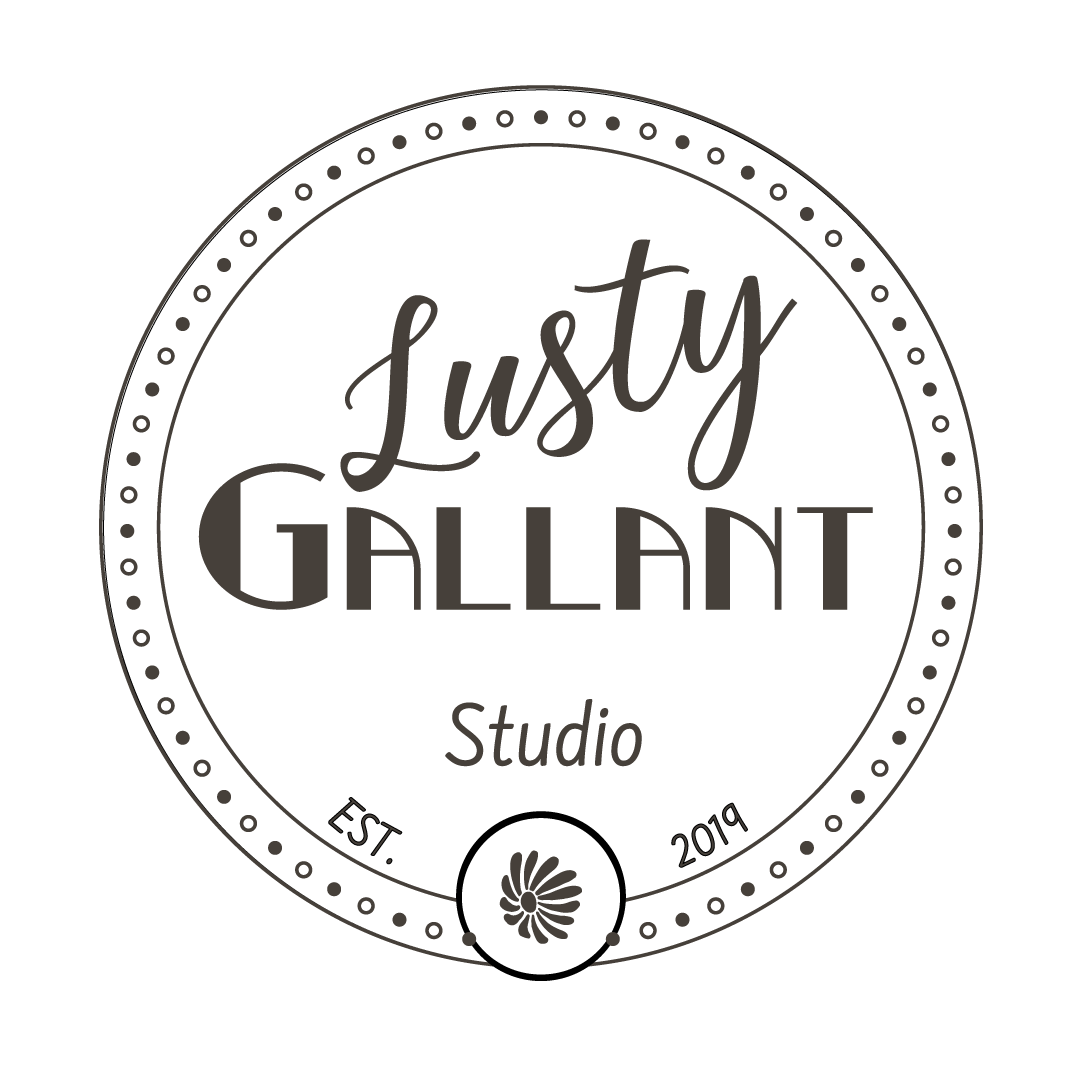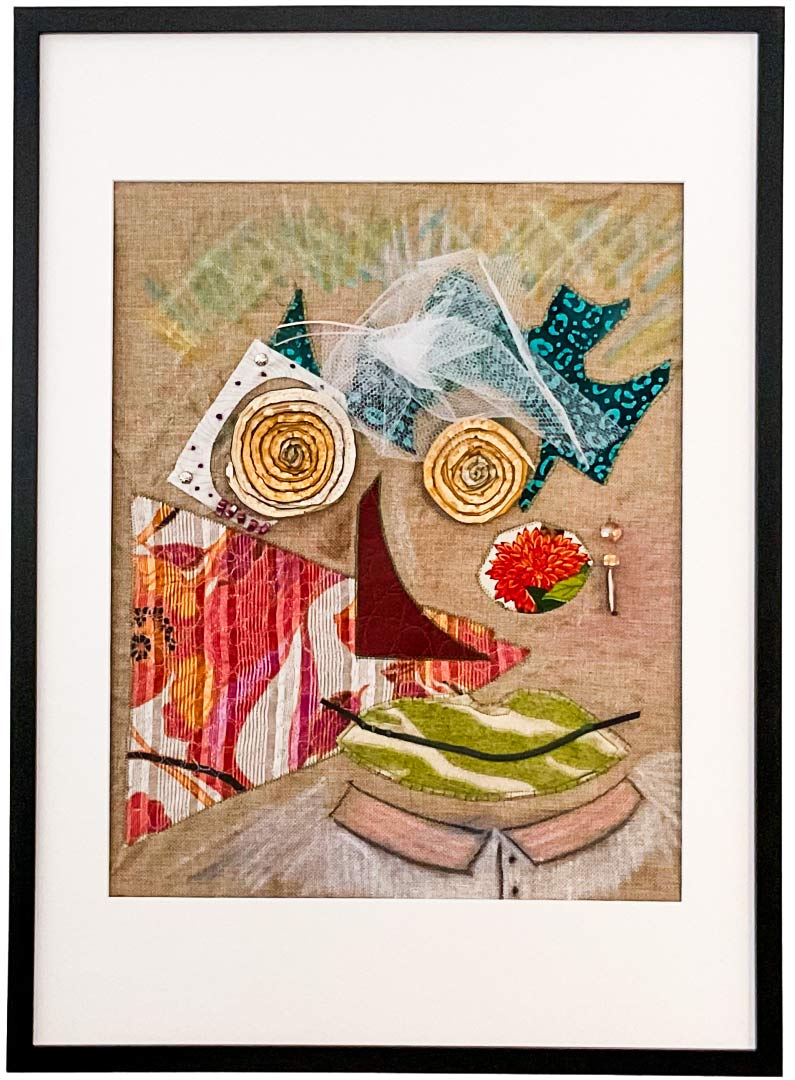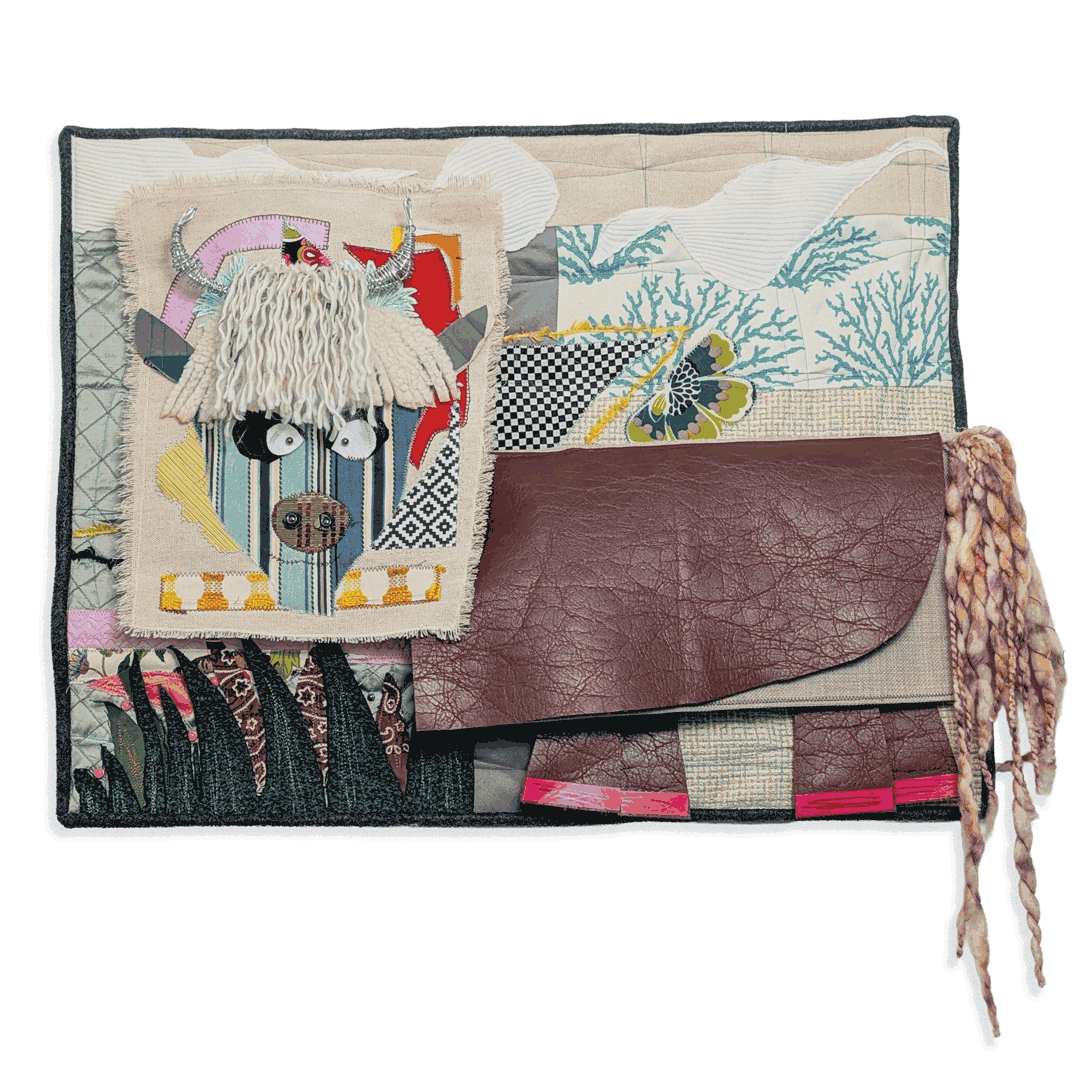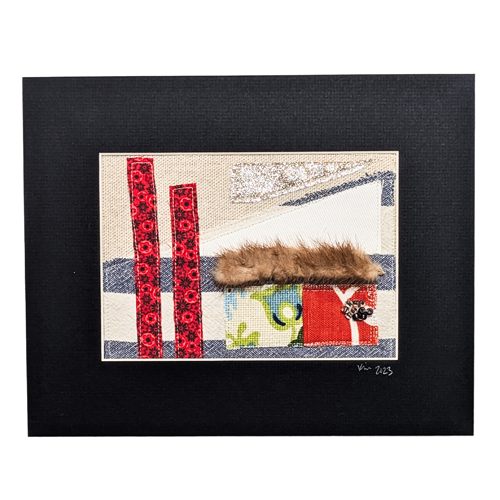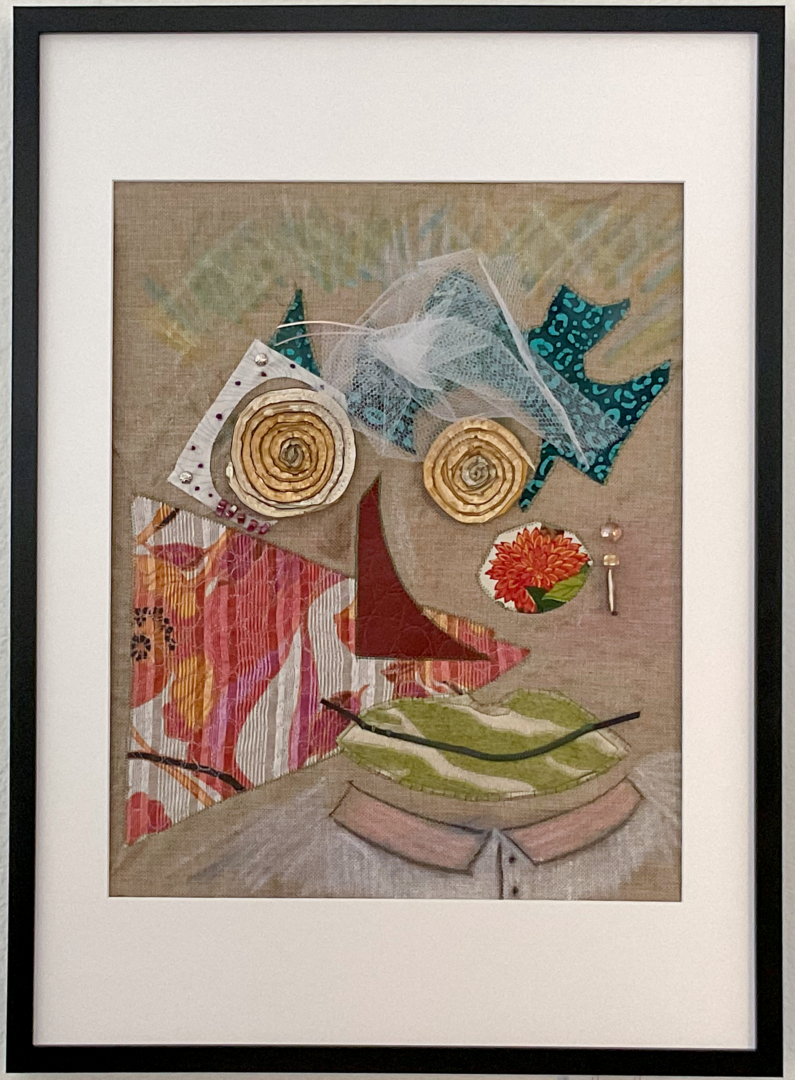Fiber & Mixed Media Art
The Enduring Value of Fiber and Mixed Media Art
Fiber art, encompassing techniques like weaving, knitting, and sewing, holds immense value by connecting us to ancient textile traditions and offering a tactile experience that transcends two-dimensional forms.
Mixed media art provides exceptional worth by encouraging artists to break conventional boundaries, blending diverse materials and techniques to create dynamic, complex surfaces and narratives.
Powerful Personal Expression
Both forms allow for powerful personal expression, offering a unique space where unconventional materials—from thread to found objects—can convey deep emotional or conceptual meaning.
The value of these art forms also lies in their ability to challenge traditional hierarchies of art, validating craft and unconventional material use as high artistic endeavor. Ultimately, fiber and mixed media art enrich the contemporary art landscape by demonstrating infinite possibilities for material manipulation and innovative artistic storytelling.
Weaving Narratives of History and Community
Fiber art, in its broadest sense, is the creation of artwork using **natural or synthetic fibers** and other materials like fabric, yarn, and thread. It encompasses both traditional textile arts—such as weaving, knitting, quilting, and embroidery—and highly conceptual, often three-dimensional forms.
When this discipline is combined with the expansive possibilities of mixed media (incorporating paint, paper, found objects, metal, or digital elements), the result is a category of art that is incredibly rich in texture, history, and social commentary. This synthesis moves the work beyond simple craft into the realm of fine art and sculpture, asserting the enduring power of textiles as a medium for profound creative expression.
A Tapestry of History: From Utility to Fine Art
The history of fiber art is virtually synonymous with human civilization itself. For millennia, textiles were essential tools of survival, serving needs such as clothing, shelter, and currency. However, even in their most utilitarian forms, these early textiles were often infused with aesthetic intent.
Cultures across the globe developed sophisticated weaving techniques (like those found in ancient Peruvian and Egyptian cultures) to create intricate patterns and symbolic tapestries. These early textiles were not just functional; they narrated histories, marked social status, and communicated religious beliefs.
In medieval and Renaissance Europe, textiles like tapestries and embroideries became highly valued decorative art forms, often commissioned by royalty and the church. The Bayeux Tapestry is a prime example, using complex embroidery to chronicle a pivotal historical event. These works were costly, labor-intensive, and served as precursors to contemporary narrative fiber art.
Historically, the term “fiber art” or “textile craft” was often used to **marginalize** work traditionally done by women and indigenous peoples. Because these practices were frequently domestic or community-based, they were systematically excluded from the “high art” categories of painting and sculpture dominated by men. This distinction created a false hierarchy that art movements later sought to dismantle. The mid-20th century marked the most significant shift.
Artists began consciously rejecting the functional constraints of textiles and embracing the expressive possibilities of the material itself. This period saw pioneers take weaving off the loom, creating large-scale, sculptural, and architectural fiber environments. These groundbreaking works utilized techniques like knotting, wrapping, and braiding, asserting the tactile qualities of fiber as a powerful three-dimensional artistic medium on par with traditional materials like stone or bronze.
This radical movement effectively brought fiber arts into the realm of contemporary fine art. The combination of fiber and mixed media exploded as artists sought more dynamic ways to express complex ideas. Quilting, for instance, evolved from domestic necessity into a powerful medium for political and social commentary (e.g., the AIDS Memorial Quilt). Today, it is common to see artists combining traditional sewing and weaving with digital prints, resin, photography, and found industrial objects, demonstrating the medium’s boundless versatility.
The Intrinsic Value to Community and Connection
Fiber and mixed media art provide extraordinary value to communities, extending far beyond simple aesthetic pleasure. Their enduring association with craft, history, and shared labor makes them uniquely suited for fostering connection.
Fiber arts are powerful conduits for intergenerational knowledge transfer. Many techniques, such as specific regional embroidery, traditional dyeing processes, or complex weaving patterns, are deeply rooted in specific cultures and communities. Teaching and practicing these arts helps preserve this intangible heritage against the homogenization of global culture. Community workshops, guilds, and exhibitions focused on fiber art become vital spaces for passing down skills and celebrating cultural identity.
The repetitive, rhythmic actions involved in many fiber techniques—knitting, sewing, stitching, or coiling—offer profound therapeutic benefits. This mindful engagement is known to reduce stress, improve fine motor skills, and provide a sense of accomplishment. For many, the physical act of creation is as important as the final product. Fiber projects are often used in therapeutic settings (hospitals, veterans’ programs) to aid concentration, manage anxiety, and facilitate emotional processing.
Because textiles are universally accessible and connected to everyday life (clothing, comfort), fiber art has a unique ability to **engage the public in difficult conversations**. Artists use discarded textiles and found objects to address issues of sustainability, consumerism, and waste.
Quilts and tapestries are often employed as narrative tools to commemorate history, honor marginalized voices, or articulate political protest, functioning as a powerful, soft activism that invites touch and closeness, rather than demanding distance. Collaborative fiber projects, such as community murals or “yarn bombing” initiatives, bring people together to create a shared visual statement.
For many artisans globally, particularly women in developing economies, fiber and textile production remains a vital source of income. By elevating these handmade goods to the level of fine art, the global market attaches greater value, supporting fair trade practices and sustainable livelihoods. The emphasis on reclaimed and natural fibers in contemporary fiber art also promotes **eco-friendly production** and critiques the destructive environmental impact of fast fashion.
Intersecting Ideas: The Conceptional Landscape of Fiber Art
Beyond its historical and community roles, fiber and mixed media art offer compelling ideas about materiality, time, and the body.
Fiber art is inherently tied to the concept of **time**. Weaving a complex tapestry or meticulously stitching an elaborate embroidery can take hundreds, if not thousands, of hours. This labor is not hidden; it is the substance of the artwork.
The visible accumulation of stitches or threads serves as a physical record of the time invested, offering a profound contrast to the speed and instant gratification of the digital world. The work itself often becomes a meditation on patience, duration, and human effort.
Unlike traditional painting or sculpture, which are often meant to be viewed from a respectful distance, fiber art invites **tactile engagement**. Textiles are intimately connected to the body through clothing, and this intrinsic relationship imbues the material with emotional resonance (comfort, warmth, memory).
When a fiber artist creates a large, soft sculpture, they are tapping into deep-seated human desires for touch and enclosure. Mixed media fibers often explore the tension between this inherent softness and the hardness of materials like metal or plastic, representing the friction between the natural and industrial worlds.
The integration of mixed media is fundamentally a challenge to the traditional art canon. By combining “lowly” or discarded materials (thread, scrap wood, plastic) with “high” art techniques (sculpture, painting), fiber artists continue to fight against the historical snobbery that dismissed textiles.
This democratic approach to materials asserts that artistic vision can elevate any material, regardless of its origin, into a vehicle for profound aesthetic and conceptual expression. The word “textile” shares its root with “text.” The warp and weft of a fabric can be seen as linguistic structures—a framework for communication. Fiber artists exploit this connection, using patterns, knots, and stitches as a form of non-verbal language to construct narratives.
A quilt is a collection of fragments (pieces of fabric and memory) sewn into a coherent whole, acting as a visual novel that tells a complex story of personal or collective experience.
Fiber and mixed media art is far more than a decorative craft. It is a powerful, dynamic, and historically rich art form that engages directly with social justice, environmental sustainability, and psychological well-being. By embracing both ancient techniques and contemporary materials, it weaves together history, community, and conceptual depth, ensuring its continued relevance and vitality in the global art landscape.
Pioneers of Modern Fiber Art
The shift of textiles from utilitarian craft to high-impact sculptural art in the mid-20th century was driven by groundbreaking individuals who redefined the material’s potential. These artists were instrumental in establishing fiber as a non-traditional medium capable of architectural scale and profound conceptual depth:
Magdalena Abakanowicz: A Polish artist best known for her monumental, woven, and organic sculptures called Abakans. Her work often dealt with the human condition, war, and depersonalization.
Sheila Hicks: An American artist renowned for her innovative textile structures, which range from miniature woven pieces to large-scale, site-specific installations composed of wrapped and knotted yarn.
Claire Zeisler: An American fiber artist who broke the functional constraints of the loom by creating free-hanging, three-dimensional sculptures using knotting, wrapping, and twisting techniques.
